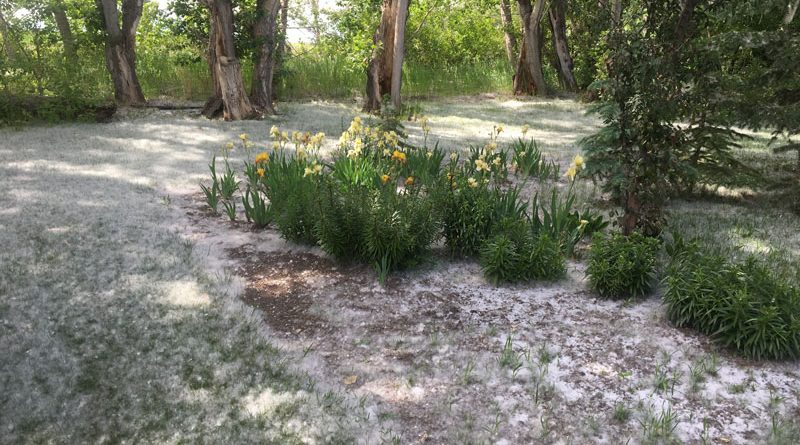Cottonwood ‘fluff’ nothing to sneeze at
By Sean Feagan, Local Journalism Initiative Reporter
While cottonwood “fluff” can make it look like Christmas in June, it does not cause allergies, according to a provincial expert on the trees.
Cottonwoods are broadleaf tree species in the genus Populus that are members of the willow family. In Alberta, there are three species: balsam poplar, narrow-leaf cottonwood and plains cottonwood. They are considered riparian species, meaning they typically grow along the banks of streams and rivers (although balsam poplars have wider habitat preferences).
Cottonwood trees reproduce by wind pollination (rather than by insects, such as in apple trees, for example), with flowering happening in the spring, prior to leaf-out. Now, the trees have mature seeds that are being released for dispersal, explained John Mahoney, water management operations manager with the province who has published multiple studies on cottonwood communities in Alberta. “They’ve gone through the pollination and seed development stage,” he said.
The fluff or “cotton”’ that residents now see being released from the trees is an adaptation that helps the seeds to spread via wind, explained Mahoney last week. “Each little bit of fluff has a seed associated with it,” he said. “That’s just the distribution mechanism.”
Typically, cottonwoods release their seeds starting around June 10, though the timing can vary.
“That changes a bit, maybe plus or minus a week,” said Mahoney. “What we’re seeing right now is the peak of the release.”
Normally, winds in Alberta are strong, and the seeds are spread far and wide by the wind. But if winds are not sufficient, the fluff can accumulate.
“If there’s no wind, the seeds just release and they fall straight onto the ground – it looks literally like snow underneath the trees,” he said.
And despite claims to the contrary, the fluff does not cause allergies.
“When people complain of allergies, it’s not the fluff,” he said. “The fluff is too big to get into your nasal passage and cause irritation.”
Instead, people’s allergies are likely caused by other plants that are blooming at the same time the cottonwoods are releasing their seeds.
“People see the fluff out and they have allergies, but they’re actually reacting to different pollens that are being released by other plants at the same time.
“It’s a common misconception for people to say, ‘here’s the cottonwood fluff and it’s giving me my allergies’ — that’s not the case.”

